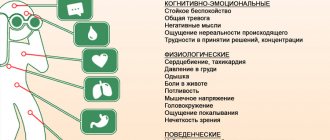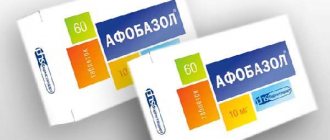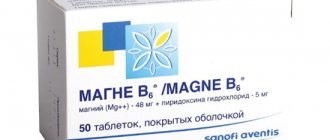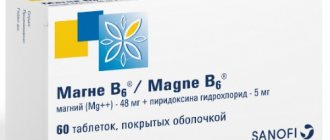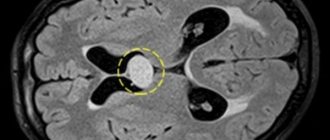Tranquilizers, the list of drugs of which will be presented below, are means for relieving causeless fears, anxiety, and tension. They do not impair cognitive functions. If we compare tranquilizers with antipsychotics and antidepressants, they are not able to eliminate hallucinations, delusions, fight depression and other similar manifestations.
But tranquilizers are characterized by anticonvulsant effects, they promote muscle relaxation and exhibit an autonomic stabilizing effect.
Most of these drugs are used for short-term treatment, since long-term use of the drugs leads to addiction. In new generation drugs belonging to the group of tranquilizers, such an effect is either greatly reduced or completely absent.
Mechanism of action
Tranquilizers produce an effect on biochemical processes in the brain. They can affect the concentration of dopamine, serotonin and other compounds. Positive pharmacological effects result from this possibility.
Each tranquilizer, regardless of type and group, has the following beneficial effects:
- Anxiolytic. Actually, this is what these drugs were created for. Correction of anxiety, elimination of feelings of excitement, internal tension. The products of this group do not have this property to the same extent. There are more and less strong ones.
Classic medications have the ability to correct disorders of neurosis and psychosis with equal success. Not so powerful, they are prescribed for anxiety disorders.
- Hypnotic. Everything is clear here. Normalization of sleep, restoration of adequate circadian rhythms. This is very important, since in most pathological processes there is a disorder of falling asleep and waking up. Be it depression, neurosis or psychosis.
As a rule, tranquilizers are used in parallel with other medications to enhance the positive effect.
- Sedative. If the anxiolytic effect is based on the correction of anxiety, it is on increasing the threshold when this most negative feeling occurs.
The person feels better, is not anxious, and can calmly engage in daily activities.
For reference:
Both beneficial effects are used in narcology, for withdrawal symptoms.
- Anticonvulsant. We are talking about correction for epileptic disorders and previous brain disorders. Spasms can occur, including during injuries, stroke, but this has nothing to do with epilepsy.
There are also more specific drugs, so tranquilizers in their pure form are not prescribed to such patients. Unless, it is also necessary to correct the current disorders in parallel.
- Muscle relaxant effect. Based on the ability to relax the muscles of the body. Drugs are prescribed to eliminate pathological spasms and seizures. But also as secondary, not primary.
All tranquilizers, one way or another, have these properties. True, the combinations will be different. It all depends on the specific name of the drug.
Types of sedatives
Sedatives are divided into 3 groups based on their origin.
| Vegetable | Chemical | Combined |
| They have a mild sedative effect and rarely cause adverse reactions. Natural preparations also strengthen the cardiovascular system and reduce the manifestations of autonomic disorders. They can be produced both in tablet form and in the form of tinctures and herbal preparations, the active components of which are valerian, passionflower, peony, lemon balm, and motherwort. | They are used mainly for the treatment of neuroses and other neurological disorders with pain syndromes. They have a pronounced and fast-acting effect. These are mostly prescription medications that require strict dosages: increasing the dose above the recommended dose may result in a hypnotic effect. These include: Afobazol, Phenibut, Adaptol, Tenoten. | Prescribed for severe or prolonged stress, after emotional shock. Such products include herbal and synthetic substances at the same time. They combine the powerful action of chemicals and the therapeutic cumulative effect of plant components. These include: Novopassit, Nervoflux, Motherwort forte, Bellaspon, Persen. The main contraindication to taking medications is renal failure. |
Many choose herbal remedies as safer, but it must be borne in mind that most drugs from each group act on the same principle: they inhibit the functioning of the central nervous system. The difference between them is only in the degree of impact on the nervous system.
Therefore, only by observing the dosage and duration of the course, you can normalize the emotional background, get rid of overstrain and balance the functioning of the nervous system. Separately, it is worth mentioning alcohol-containing sedative tinctures. They act quickly enough and have a hypnotic effect, so they are usually used before bedtime to eliminate palpitations and symptoms of VSD.
Well-known representatives of this group: Corvalol, Valocordin, Valoserdin. But they are not prescribed for pathologies of the liver and kidneys, as well as for children under 3 years of age and nursing or pregnant women.
Sedatives
Drugs with sedative properties have a calming effect on the central nervous system. It manifests itself in inhibition of the process of emotional arousal in response to stimuli. But since these drugs cause a mild hypnotic effect, this may affect daytime activity. The main active components of these medicines are bromine and extracts of medicinal plants.
Nootropics
Nootropic drugs are used to increase mental and emotional endurance in a depressed, inert state due to extreme physical or emotional stress. They stimulate mental and motor activity by dilating peripheral blood vessels, which improves blood microcirculation in the brain.
They also increase neural activity, improving learning and memory. The drugs are also effective for dizziness and headaches caused by astheno-vegetative syndrome. Known nootropic substances: piracetam, phenotropil, vinpocetine, xanthinol nicotinate, pantogam.
Antidepressants
The main property of antidepressants is to improve mood in mental, somatic and neurovegetative disorders. This is achieved by stimulating the production of so-called “happiness” hormones: serotonin, dopamine and other neurotransmitters.
These drugs are indicated for increased anxiety and emotional stress, apathy, excessive suspiciousness, and irritability. They also help get rid of secondary disorders caused by depression: sleep and eating disorders (overeating, anorexia and others).
However, different groups of antidepressants differ in their predominant effect.
- MAO inhibitors: stimulate the central nervous system.
- Maprotiline: used for depressed, anxious states.
- Pirlindole: Works like nootropics to improve cognitive performance.
- Tofranil: thymoleptic properties on the nervous system are combined with stimulants.
Due to the cumulative effect of antidepressants, the therapeutic effect appears 3-10 days after the start of use.
Central nervous system stimulants
Psychostimulant drugs increase psychophysical performance, speed of processing and memorization of information, and relieve migraines and drowsiness. They are used for neurological, cardiovascular and infectious diseases, as well as drug and drug poisoning that cause suppression of central nervous system functions.
Based on their origin, psychostimulants are divided into the following groups:
- purine derivatives: guanine, caffeine, adenine, xanthine;
- phenylalkylamines: phenamine, centedrine, methamphetamine;
- sydnonimine derivatives: sydnocarb, feprozide sydnimine;
- piperidine derivatives: coniine, meridyl, conhydrin, piperine.
Neuroleptics
The pharmacological properties of antipsychotic drugs include: sedative, antipsychotic, antiphobic. They are used for various mental disorders: hallucinations, uncontrollable outbursts of aggression, schizophrenia. Without having a pronounced hypnotic effect, if the optimal dose is exceeded, the drugs can be administered to a drowsy state.
Therefore, when used simultaneously with psychostimulants, they weaken the effect of the latter. Over-the-counter sedative antipsychotic drugs without side effects such as drowsiness consist mainly of piperazine phenothiazine derivatives (dixirazine, perphenazine, perazine, fluphenazine), as well as some butyrophenones.
Tranquilizers
This group of psychotropic drugs has a depressant effect on the central nervous system, reducing the manifestations of negative emotions such as anxiety, fear, worry and emotional stress. The most common drugs are based on benzodiazepines - substances that inhibit the excitability of neurons in the hypothalamus, limbic system and thalamus, which are responsible for emotional responses.
The most potent drugs from this group of drugs are: Phenazepam, Diazepam, Valium, Relium.
Tetrazepam, Diazepam, Sibazon have a relaxing effect on skeletal muscles during motor and mental stress. But these drugs can also slow down the reaction rate, causing weakness. Although there are effective tranquilizers for daytime use that do not cause drowsiness: Grandaxin, Medazepam.
Calming homeopathy
Sedatives without prescriptions, without drowsiness, can also be found among homeopathic preparations, the raw materials for which are natural concentrates from plants and minerals. They are rarely addictive, and neither are the side effects. Below are examples of such drugs (indications for use are indicated in brackets).
- Notta (nervous exhaustion).
- Musk (chronic fatigue syndrome).
- Lachesis (neuroses during menopause).
- Rescue Remedy (emotional stress).
- Platinum (mood swings, outbursts of aggression).
- Valerianochel (neurasthenia, overexcited state).
- Inhalation (hysterical aphonia, depression of exogenous origin, caused by internal factors).
- Gelsemium (nervous fatigue along with headache, tremors or internal shaking).
Benzodiazepine receptor agonists
These drugs are considered the most powerful tranquilizers and at the same time they were the first to be received.
If we take a short excursion into biochemistry, it is worth saying that benzodiazepines are synthetic analogues of a special substance that is synthesized by the brain itself.
When it enters the body, it reduces the conductivity of nerve impulses, blocks the response of receptors to natural biochemical substances, and therefore excitability decreases.
The limbic system and the brain stem no longer become as irritated as before. Subjectively, a complex action is felt as calmness and drowsiness.
List of names of benzodiazepine tranquilizers: Alprazolam (Tafil) Bromazepam (Lexotanil) Diazepam (Valium) Dipotassium clorazepate (Tranxilium) Clobazam (Frisium) Lorazepam (Tavor) Medazepam (Rudotel) Nordazepam (Tranxilium NG) Oxazepam (Nozepam) Prazepam (Demetrin) ) Chlordiazepoxide (Elenium ).
Let's look at the most popular trade names.
Phenazepam
Phenazepam is the most powerful tranquilizer (anxiolytic), blocks nerve conduction at the level of special centers of the brain. The result is a quick effect that wears off after about two days.
The product is a long-acting drug. Therefore, it is used in a wide range of cases: from neuroses to schizophrenia. With a tendency towards more complex clinical situations.
It is well tolerated, but often causes side effects. Then it can only be used under the supervision of a doctor.
Tofisopam
A drug that has an atypical effect for sedatives. This is a mild tranquilizer (anxiolytic), which has a disinhibiting ability and increases the patient's activity. And at the same time it removes anxiety and fears.
It is used for the correction of moderate and severe neuroses, apathy, and disorders such as depression (in parallel with specific medications).
Well tolerated. A distinctive feature is that Tofisopam (aka Grandaxin) does not potentiate the effect of alcohol. Conventional drugs enhance the effect of ethanol, which drinkers use to prolong positive feelings.
Librium (aka Chlozepid)
Historically synthesized first several decades ago. Now there are a lot of means that are much safer and more effective.
Chlozepid has not lost its relevance because it is able to interrupt resistant conditions when other medications fail. Therefore, it is still actively used in specific cases.
Formally, it still acts on special centers of the brain, inhibits the influence of natural substances, benzodiazepine analogues. Creates an increased load on the body, so it is used with caution.
It is even better if the patient is treated in a hospital, so that if necessary, the drug can be quickly discontinued without consequences.
The list is incomplete. You also need to take into account that medications have, in addition to the main one, a dozen trade names. Each pharmaceutical company names the product differently.
Serotonin receptor agonists
Not widely used. This is due to the high selectivity (selectivity) of the pharmacological action. They have the ability to redistribute the production of the substance of the same name - serotonin.
Serotonin is synthesized more actively in some areas than in others. Therefore, drugs from this group of tranquilizers act simultaneously as antidepressants, albeit to a lesser extent than their older “brothers”.
The main name of the group of serotonin receptor agonists is Buspirone, also known as Spitomin.
The drug is prescribed for anxiety disorders, obsessive-compulsive neuroses, and borderline pathologies. Also as an aid in the treatment of depression.
Attention:
Schizophrenia and psychosis are not included in the list of indications; the effect is insufficient.
Buspirone has a minimum of contraindications, so it can be used even in weakened patients.
The anxiolytic effect of serotonin receptor agonists is based on the redistribution of the production of neurotransmitters, as well as on the disinhibition of the patient.
Despite the safety of the medicine, it still cannot be used without a doctor’s approval.
Complex action drugs
From the name you can understand that they act not only as anxiolytics but also as an auxiliary effect. These are a kind of systemic medications that simultaneously solve several problems.
Attention:
Due to such versatility, a wide range of influences, there are also more side effects. Tolerability is worse.
Or you have to pay the price of effectiveness, it turns out that the drug cannot solve any of the problems in cases of moderate and severe severity.
Mebicar
Synonyms: Adaptol, Mebix. The pharmaceutical name is based on the active substance with the unpronounceable nomenclature name tetramethyltetraaza-bicyclooctanedione.
The drug restores the body’s functioning on several fronts at once: it removes anxiety, increases resistance to stress, and also has a nootropic effect. That is, it nourishes the brain and normalizes oxygen metabolism.
Thanks to this, the drug can be taken after injuries to cerebral structures or strokes. Anything that potentially damages the nervous system. A nice thing is that Mebicar gives a minimum of side effects.
Atarax
A drug with minimal tranquilizing effect. Mainly used as an antiemetic and anti-convulsant.
It is prescribed as a measure of maintenance therapy on the one hand, and on the other hand, it corrects mild pathological conditions in a monotherapy format (that is, as the only prescribed remedy).
Amizil
An effective drug with a wide spectrum of pharmacological activity. It works both as an anxiolytic and as an anti-anxiety, analgesic, hypnotic, and antihistamine. The list doesn't end there.
Despite such versatile activity, Amizil is used primarily for the correction of pathologies of the depression and anxiety disorders group.
It is often prescribed because it has minimal side effects and is well tolerated by patients even with chronic diseases.
List of synonyms: Actosin, Benaktizin, Lucidil, Tranquillin, Amitakon, Benaktina, Kafron, Cevanol, Nervatil, Neurobenzil, Parazan, Phobex, Procalm, Suavitil, etc.
This is not the only, but the most common and widespread classification. There are others too.
Strengths and weaknesses of the study
This is the largest and most comprehensive study of its kind to date. The strength of the study is the use of primary care network databases, but this is also a weakness, since electronic records in the primary care network are intended for clinical purposes and not for research. These records do not reflect the discussions underlying clinical findings and sometimes do not capture all relevant data due to the coding system used. Thus, the question of the benefits of using psychotropic medications during pregnancy could not be fully explored based on the available data. The main limitation of the study is the inability of electronic databases to fully capture the social aspects associated with difficult decisions in the context of the problem under study.
As noted, some associations between negative outcome and psychotropic medications were driven by confounding factors and were subsequently found to be nonsignificant. However, perhaps beyond the scope of this study, there is a need to continue the discussion on the topic, especially regarding the interpretation of the results. According to the authors, this resource was not sufficiently used. Management of pregnancy in women receiving psychotropic medications is a multifactorial task, and ignoring other factors at play may affect clinical approaches and changes that this study may contribute to.
By duration of beneficial effect
- Short-acting products. The operating time is less than 4-6 hours. Such drugs are mainly used to eliminate momentary pathological conditions. That is, acute processes, episodically.
They are not suitable for everyday long-term use. The most prominent representatives of this type are Midazolam and Benzodiazepine.
- Medicines of medium duration of action. They work throughout the day. After 24 hours, the effect wears off completely. The drug is eliminated from the body and leaves no traces.
They are used for complex treatment in patients of varying severity. They constitute a kind of “gold standard” for the correction of various psychopathological conditions and neurogenic disorders. Among the representatives are Nozepam, Alprazolam.
- Long-acting drugs. They work for two days. The classic representative is the already named Phenazepam.
Basically, such drugs are prescribed for the treatment of resistant conditions or for patients who are negligent about therapy and are not ready to follow the recommendations of specialists.
results
During the time period covered by the study (1995 to 2012), the use of antipsychotics before and during pregnancy overall increased by more than 50%, and the prescription of anticonvulsants with mood-stabilizing effects in women with a history of psychosis or depression almost doubled. At the same time, the frequency of lithium prescriptions decreased by almost half - there were so few cases that their subsequent analysis was impossible.
Descriptive studies:
- The frequency of prescription of psychotropic drugs during pregnancy decreased. By 6 weeks' gestation, 54% of women who had received these medications before pregnancy were still taking atypical antipsychotics, 37% mood stabilizer anticonvulsants, 35% typical antipsychotics, and 33% lithium. By the start of the third trimester, 38% continued to receive atypicals, 27% lithium, 19% typical antipsychotics, and 14% anticonvulsants.
- Rates of reported suicide attempts, overdoses, or intentional self-harm decreased during pregnancy, increasing further after childbirth but reaching only half the levels seen before pregnancy.
- Immediately after birth, the number of cases of hospitalization in a psychiatric hospital, incl. involuntary use more than tripled , and the recording of psychosis, mania, or hypomania in medical records immediately after childbirth doubled.
- Pregnant women were more likely to discontinue psychotropic medications compared to nonpregnant women.
Fig: Incidence of cases from 18 months before pregnancy to 15 months after delivery. a) the frequency of suicide attempts, self-harm and overdoses, b) the frequency of hospitalizations due to psychosis, c) the frequency of psychosis, mania or hypomania according to medical documentation.
Cohort studies:
- The use of antipsychotics during pregnancy did not increase the risk of having a child with serious congenital anomalies.
- Women who took antipsychotics had an increased risk of cesarean section delivery, complications of birth, and incidence of neurodevelopmental and behavioral disorders in the newborn. However, after adjustment for confounding factors, this association was not significant.
- Children of women who received normothimic anticonvulsants during pregnancy had an increased risk of negative outcomes compared with children of women who did not receive this therapy. The increased risk persisted after adjustment for women's health and lifestyle factors. Thus, the adjusted relative risk of having children with serious developmental anomalies in persons receiving anticonvulsants was 2.05 (95% confidence interval from 1.53 to 2.74), which corresponds to a 2-fold increase in risk (absolute values: 4.1% cases in patients who received anticonvulsants during pregnancy, 2.1% of cases in those who received anticonvulsants in the period 4-24 months before pregnancy, but they were discontinued at least 4 weeks before pregnancy, and 2.0 % who have not received anticonvulsants before or at least 2 years before pregnancy).
- The use of valproic acid drugs was associated with twice the risk of disorders in the child than the use of other anticonvulsant mood stabilizers and three times the risk than in children of women who did not receive any anticonvulsants.
By generation
The third basis for classification is the generation of the drug.
- First. Old remedies, historically synthesized in the 50-60s of the last century. They are prescribed in the most extreme cases, if the condition cannot be corrected in any other way.
They give a lot of serious side effects, are poorly tolerated, and exclude the patient from active life. Therefore, its use is undesirable. Apart from the most extreme cases, at the discretion of the doctor. A classic example is Meprobamate.
- Second generation. These are the benzodiazepines already described above (most of them). Used to treat most pathological processes. They are relatively well tolerated, especially if the regimen and dosage are followed. But there are still some incidents.
- The third generation is specific drugs, agonists of serotonin receptors. They appeared at the end of the 60s of the last century. But they are still considered relatively new and not well understood.
Presented in minimal quantities, the main name is Buspirone. The drug does not have a sedative or muscle relaxant effect, and rarely causes dependence or side effects.
According to pharmacological effect
Finally, there is a fractional classification of drugs depending on their pharmacological effect.
Accordingly, they distinguish:
- Benzodiazepines. They block the focal biochemical activity of cerebral structures and the brain.
- Definylamine derivatives. They work quickly, but are quickly addictive.
- Carbamine esters. Mainly short- and ultra-short-acting products. Prescribed for the relief of acute pathological conditions.
- Mixed medications. Which affect the body in several ways at once.
What sedatives can you take during pregnancy?
It is not recommended to take any medications, including sedatives, in the first trimester of pregnancy, when the fetus is at an active stage of formation. During this period of time, it is advised to limit yourself to soothing teas based on lemon balm, linden, mint, and chamomile decoctions.
To relieve nervous tension, you can also resort to aromatherapy with essential oils of lavender and coniferous plants.
At the 16th week of pregnancy and later, according to the doctor’s recommendations, it is allowed to take some sedatives: Tenoten, Valerian, Persen, Glycine, Novo-Passit.
Tablets with motherwort are also considered a harmless remedy: the plant has a sedative and anticonvulsant effect on the body, and also has a beneficial effect on the organs involved in blood circulation, which alleviates toxicosis.
Some homeopathic medicines are also acceptable, such as Nevrosed, produced in the form of lozenges: it protects women from the development of neurological diseases, stopping factors that provoke a depressed and irritable mood.
They can be shown to patients provided that there is no alcohol or certain substances in the composition to which they were previously allergic. More potent drugs from the category of tranquilizers and antidepressants are prescribed only after consultation with a doctor.
Important! During pregnancy, the use of psychoactive drugs based on benzodiazepine and barbituric acid derivatives is contraindicated: they can disrupt the process of fetal formation and cause uterine bleeding.
In addition, over-the-counter sedatives are often required due to a lack of vitamin B, without which the normal activity of nerve cells in the brain is impossible.
You can compensate for its deficiency by including foods rich in it in your diet (liver, dairy products, nuts and fresh herbs), as well as taking courses of vitamin and mineral supplements with B vitamins (Magne B6), which do not cause drowsiness and help eliminate the cause of nervous disorders .
Daytime tranquilizers
They got their name for their minimal anxiolytic, inhibitory and sedative effects, so they can be taken by busy people.
Basically, they solve problems more gently and, on the contrary, disinhibit the patient and restore his normal state. At the same time, anxiety, phobic disorders and fears are still corrected.
New generation tranquilizers, for example, Tofisopam, are precisely daytime ones, since they solve the problem of eliminating pathological symptoms with almost no side effects, lethargy and drowsiness. List of names: Gidazepam, Buspirone, Mebicar (Adaptol), Medazepam (Rudotel).
Tranquilizers without a prescription
In recent years, legislation in the field of trafficking in psychotropics (and all drugs of this type are classified as such) has been greatly tightened. Therefore, finding medicines without a special document on a legal basis is almost impossible.
For one reason or another, some pharmacies sell medications without prescriptions. Buying funds in such a semi-legal way is strongly discouraged. And not only because of problems with law enforcement agencies.
The most popular over-the-counter tranquilizer of the latest generation is Afobazol.
The drug does not cause addiction or withdrawal symptoms. It has an anti-anxiety and mild stimulating effect.
It does not cause drowsiness, lethargy, or muscle weakness, which means it can be used during working hours.
Among other names that are relatively easy to find without a prescription: Benactizine (Amizil), Buspirone (Spitomin), Mebicar (Adaptol, Mebix), Mexidol, Oxilidine, Stresam, Phenibut, Tofisopam, Hydroxyzine, Zoloft.
You cannot take even the mildest tranquilizers without permission. Because there are real risks of encountering fatal or disabling complications.
Methods
The researchers used two electronic databases (THIN and CPRD) containing anonymized medical information from general practitioners. These databases include data from over 10% of the UK population and are representative of the entire UK population (Blak et al. 2011; Williams et al. 2012).
Using data from January 1, 1995, to December 31, 2012, the researchers identified a cohort of women diagnosed with psychosis (bipolar disorder, schizophrenia, or similar diagnoses) who received an antipsychotic and/or mood stabilizer and became pregnant. The work included just over 3 thousand cases of such pregnancies out of almost 500 thousand of all registered cases of pregnancy.
The project was divided into two parts:
- The first part consisted of five descriptive studies focusing on the use of psychotropic drugs during pregnancy and changes in mental status
- The second part was represented by a series of cohort studies examining the absolute and relative risk of adverse pregnancy outcomes for mother and child in connection with the use of psychotropic drugs.
Indications
Tranquilizers are prescribed for the treatment of anxiety disorders, phobias, and partly depression. If we talk about a specific list of reasons for admission:
- Border violations. Personality disorders (psychopathy) with changes in the emotional sphere and behavior.
- Neuroses of all forms. Including anxiety pathologies, obsessive-compulsive disorders.
- Phobias.
- Insomnia of any type. In the form of a single drug for monotherapy or a complex action agent along with others.
- Hyperactivity.
- Withdrawal syndromes. That is, withdrawal after taking psychoactive substances. Basically, we are talking about alcohol.
- Lesions of skeletal muscles, severe spasms.
- Preparation for anesthesia.
- Childbirth, as part of facilitating licensing activities.
There are also specific indications. The list includes only those that are in one way or another found in the annotations for most drugs. Next, you need to look at the instructions themselves.
You should not take medications, including over-the-counter tranquilizers, as there is a possibility of disorders of higher nervous activity, mental health, development of addiction and other disorders.
Indications for taking sedatives
Sedatives without prescriptions, without drowsiness, are usually chosen by office workers, students, teachers, whose work involves increased mental stress, when it is necessary to relieve emotional stress, but maintain vigor.
Indications for taking medications are:
- PMS;
- sleep disorders;
- chronic stress;
- weather sensitivity;
- emotional burnout;
- irritability, anxiety;
- pregnancy (in situations accompanied by anxiety disorders).
On a note! Sedative medications eliminate the effects of stress, so it is necessary to find and, if possible, remove internal or external stress factors. These could be hormonal imbalances, extreme physical activity, depression, a busy schedule, lack of rest, or unresolved psychological problems.
The article discusses effective sedatives that can be bought without a prescription.
Otherwise, taking sedatives can develop into addiction, and constant stress can develop into emotional burnout, nervous, heart and other diseases.
Contraindications
There are also quite a lot of reasons for refusing medications:
- Shock states.
- Coma.
- Individual intolerance to the active components.
- Increased intraocular pressure, glaucoma.
- Age before reaching adulthood.
- Pregnancy at any stage.
- Breast-feeding.
- COPD
- Intoxication. Including alcohol and drugs.
- Dysfunctional disorders of the liver, kidneys. Until complete recovery and transition of the pathological process into remission.
- Severe forms of depression. Because suicide attempts are possible.
And that's not all.
conclusions
According to the study, most women stop taking psychotropic medications before or early in pregnancy.
In this cohort, women receiving anticonvulsant mood stabilizers, especially valproate, had an increased risk of having children with severe developmental abnormalities and neurodevelopmental and behavioral disorders.
Among women receiving antipsychotics, after adjustment for confounding factors, incl. obesity, smoking, problems with alcohol, use of other drugs and drugs, no increased risk of serious congenital anomalies was found, which is consistent with previous studies (Thomson et al. 2012; Coughlin et al. 2015; Wide et al. 2004) and the content of clinical guidelines (NICE, 2014). At the same time, the existing increased risk of adverse outcomes in children of this group of people compared to the general population is associated with these unfavorable lifestyle factors.
Side effects
The number of negative phenomena goes into dozens. Here are the main and most common violations:
- Urinary incontinence.
- Skin rash and allergic reactions.
- Dyspepsia, heartburn and other pathologies of the digestive tract.
- Drop in blood pressure, hypotension.
- Liver disorders.
- Weight loss.
- Endocrine disruptions, hormonal instability.
- Headache.
- Lethargy, drowsiness, weakness. Loss of performance.
- Apathy.
That's not all.


